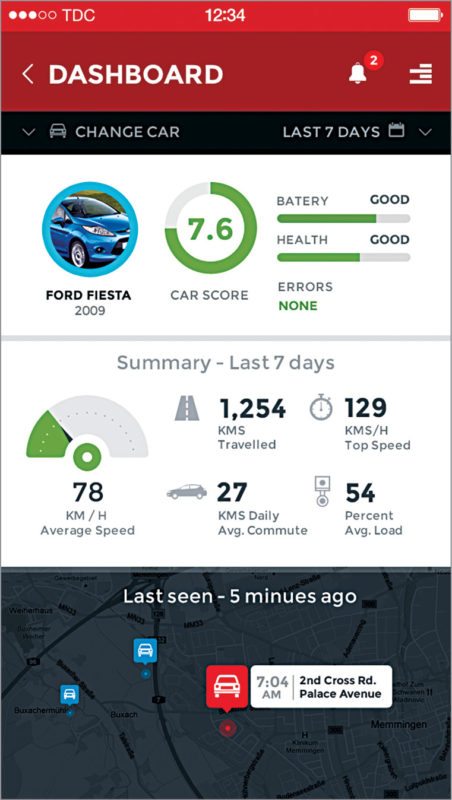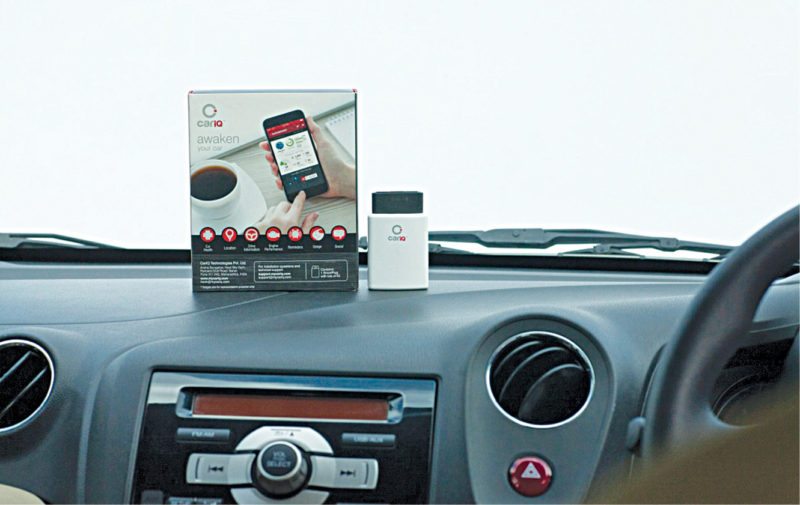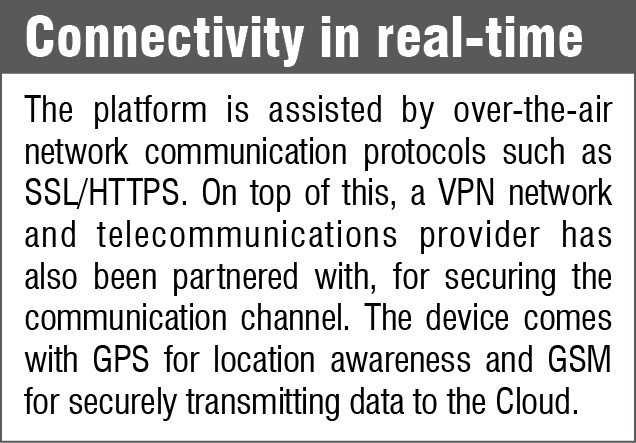“InGod we trust, all others bring data.” When there is so much data around, the challenge is to make information from such resources or objects more meaningful. Now with the Internet of Things (IoT), an ocean of data can be captured once connectivity barriers are surpassed, which is why CarIQ has proved that even cars can bring a wealth of information.
Why the car

Data received from connected cars can prove a huge potential from improving mileage to receiving suggestions on where your next road trip could be. Developers in the IoT zone are facing challenges to meet such demand for high-performance IoT applications while keeping these simple and effective. With possibilities of even your toothbrush getting connected to the Internet becoming inevitable, cars cannot be out of the crosshairs. A car has so much data that it can tell us about itself and everything that controls it, which makes it quite interesting.
“We first explored if it was possible to read data from a car, and once we figured out that it was, CarIQ began its journey, serving its purpose of making this data available to anyone and bettering the life of a car owner,” says Deepak Thomas, co-founder at CarIQ.


CarIQ uses an IoT device called SmartPlug to read data from the car. It fits snugly into the onboard diagnostics port of the car and works as a simple plug-n-play device. Most people are unaware that onboard diagnostics is a standard port on all cars and is located under the steering wheel. Once connected, the car’s data is sent to Cloud servers, where it is analysed with hundreds of similar cars, and consumable data is given back to the users. They can set custom alerts for speeding/geo-fence, share trips on social media, view vital stats about the cars and connect with car-ecosystem players like workshops and roadside-assistance providers.
Transformational integration of the CarIQ platform
Looking at the insides of CarIQ, we find that real-time communication and proprietary components need to be tested, so as to ensure seamless connectivity when thousands of cars are involved.
“The hardware went through multiple iterations to get to the state it is in today. Developing the hardware was the biggest challenge. Prototyping labs take time, cost and patience. Turnaround time for getting the prototypes ready was another hurdle. Hardware development took time to reach a state that we were satisfied with,” says Thomas.
The next challenge in integration would be developing the soul on which CarIQ runs. Software and its updates are the differentiators in any smartproduct we see these days. The features and additions are made friendly and accessible to users with simple smartphone application updates, without any hassles.

Arriving at accurate estimations
Leveraging the platform’s highly-reliable components, accurate estimations of mileage, gear ratios, engine health, car health, driver rating and drive scores are acquired. The team has developed a unique way in which data is collected and sent, thereby minimising bandwidth usage.
Also included is an accelerometer, onboard storage, Bluetooth and processors to control all this. The accelerometer aids in identifying rash-driving incidents and accidents while alerting engine monitors about such events before kicking in. Onboard storage is used when GSM network faces connectivity issues. This way drive data is never lost.

Big Data team takes care of architecture and advanced analytics on the data, while Microsoft Azure forms the very cradle on which this robust architecture rests. It performs the function of analysing cars of similar makes and models, and benchmarks these for analytics and scoring.
FleetIQ is one such extension to CarIQ. It features the fleets’ requirements. FleetIQ can monitor and manage all cars through a single portal, leveraging minimal bandwidth for transmitting information back to the hub. It goes one step further from onboard diagnostics on CarIQ platform.
Further, this system provides a different set of in-depth details about the car such as the capability to monitor the health summary, which the team claims could help save a lot of money and get the car geared up for maintenance. FleetIQ also makes sure that drivers are sent tips to improve their driving techniques, thereby assuring that the car is in good hands.

Smartcars are en route
Coming to interoperability in transformational integration, CarIQ could be termed as a completely autonomous platform. With its user-friendly trending application available on online application stores, you can experience its assistance on-the-go, wherever you are.
Creation of a tandem between the user and the car using the most intelligent components of such similar platforms is where the IoT emerges victorious.
“Since we have indigenously built our hardware, there is scope for expansion. Add-ons for hardware can be integrated with CarIQ devices to provide better experience to the user. These add-ons can communicate with CarIQ device using custom protocols. These can also make use of CarIQ’s robust platform. Anyone can get in touch with us if they think they have a hardware product that is relevant,” says Thomas.
With such path-breaking innovations around, let us begin by saying that the world is ready for intelligent cars of the future!
You may also like other innovation articles
Shanosh Kumar is technology journalist at EFY. He is BCA from Bangalore University and MBA from Christ University, Bengaluru










How to recharge this device please help me send me contact no